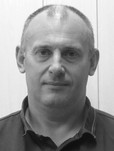2010-2017 Moscow dumbbell sport championships: long-cycle jerk performance mastery progress data analysis
Фотографии:
ˑ:
Associate Professor, PhD Ya.E. Yakubenko1
Associate Professor, PhD V.E. Smirnov2
1Moscow Aviation Institute (National Research University), Moscow
2Russian State University of Physical Education, Sports, Youth and Tourism (SCOLIPE), Moscow
The national sport community gives a high priority to improvements in the dumbbell sport training models based on the best training standards developed and proved by the leading athletes in every weight class. Objective of the study was to improve the dumbbell sport training systems based on the training standards demonstrated by the elite national athletes. Subject to the study were the elite training systems and experiences versus the long-cycle jerk performance mastery progress data reported by the 2010-2017 Moscow Dumbbell Sport Championships.
The performance mastery progress data showed the lightweight (73kg, 78kg) classes lagging behind the heavyweight ones in two events for the last 5 years, with the 95kg category ranked the best by the performance analysis followed by the 95-plus kg category. The long-cycle jerk performance mastery progress data and analysis showed that the sport community should give a special attention to the lightweight categories since the 68kg and 78kg were found to regress in the performance mastery for the study period. The study data and analyses make it possible to identify the drawbacks in the dumbbell sport training systems and facilitate qualifications to the Moscow dumbbell team – that has made an impressive progress from the 25th place on the team standings list in 2010 to the top ten in 2016.
Keywords: dumbbell sport, sport rank, dumbbell lifts, training meso-cycle, weight class, training intensity zone.
References
- Vorotyntsev A.I. Giri. Sport silnyih i zdorovykh [Kettlebells: The Sport of the Strong and Healthy]. Moscow: Sovetskiy sport publ., 2002, 272 p.: il.
- Gorodnichev R.М., Shlyakhtov V.N. Fiziologiya sily [Physiology of force]. Moscow: Sport publ., 2016, 232 p. ISBN 978-5-906839-71-8.
- Jim V.Y. Sravnenie tekhniki vypolneniya tolchkovykh uprazhneniy v tyazheloy atletike i girevom sporte [Comparison of technique of jog exercises in weightlifting and kettlebell sport]. Ekstremalnaya deyatelnost cheloveka, 2013, no. 4, pp. 27-28.
- Lytkin A. Zamenitel giri: nestandart. trenazher [Kettlebell substitute: nonstandard training apparatus]. Sport v shkole, 2013, no. 3, pp. 51- 52.
- Pavlov V.Yu., Revyakin Yu.T. Postroenie trenirovochnogo protsessa yunykh girevikov na osnove ispolzovaniya modelnykh kharakteristik [Organization of Training Process of Junior Weightlifters Based on the Use of Model Characteristics]. Teoriya i praktika fiz. kultury, 2013, no. 5, pp. 60-63.
- Simen'V.P., Drandrov G.L. Vzaimosvyaz sorevnovatelnykh rezultatov vysokokvalifitsirovannykh girevikov s pokazatelyami fizicheskogo razvitiya i fizicheskoy podgotovlennosti [Elite kettlebell lifters' competitive success rates versus physical development and fitness rates]. Teoriya i praktika fiz. kultury, 2016, no. 5, pp. 73-75.
- Simen V.P., Drandrov G.L. Struktura mnogoletney sportivnoy podgotovki girevikov [The Structure of Long-Term Sports Training of Kettlebell Lifters]. Teoriya i praktika fiz. kultury, 2014, no. 10, pp. 66-70.
- Kharitonova L.G., Kuznetsova I.A., Antipova O.S. Mediko-biologicheskiy kontrol v girevom sporte na etape sportivnogo sovershenstvovaniya [Medicobiological monitoring in kettlebell lifting at the stage of improvement of sports skills]. Teoriya i praktika fiz. kultury, 2015, no. 3, pp. 8-10.












